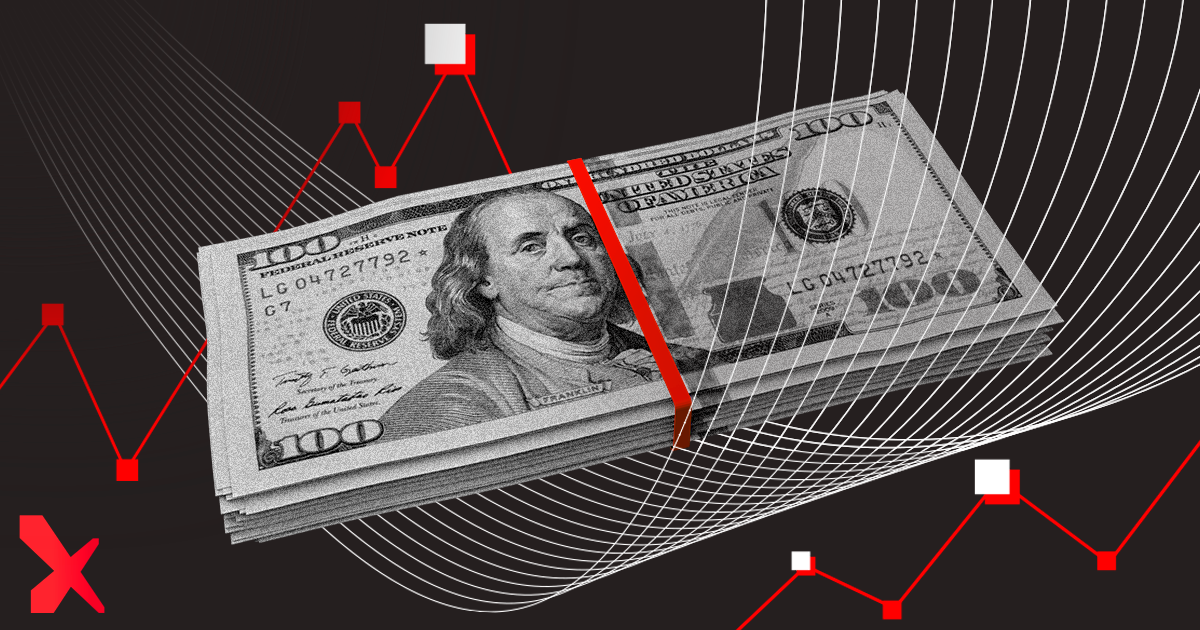Trading Signals 05/02 – 09/02
Why the US Dollar Dominates the Market?

The Rise of the US Dollar
Following World War II, the US dollar carved its path to global supremacy, anchored by the Bretton Woods system established in 1944. This monetary arrangement, crafted by allied nations in Bretton Woods, New Hampshire, set the value of global currencies against the US dollar, which was in turn tied to gold at $35 an ounce.
Within this framework, the US dollar ascended as the primary reserve currency worldwide. Countries stockpiled significant US dollar reserves, enabling smoother international trade and debt settlements. This reserve status endowed the US with considerable economic leverage, reinforcing the dollar’s global prominence.
The stability of the Bretton Woods system wavered in the 1960s. The US, grappling with a growing trade deficit, issued more dollars than its gold reserves could support. As nations grew skeptical of the dollar’s stability, President Nixon, in 1971, announced the US would cease converting dollars to gold, marking the end of the Bretton Woods era.
While the Bretton Woods system dissolved, the US dollar’s global influence persisted, buoyed by several factors we’ve touched upon. Yet, it’s essential to understand that the dollar’s reign isn’t immutable. Discussions about the future global monetary landscape and the dollar’s place within it are ongoing.
Reasons for Leadership
Consistency and Credibility: The US dollar has earned its reputation as a dependable currency, largely anchored by the US’s robust economy and political stability. This reliability makes it a go-to for cross-border transactions.
Global Recognition: The dollar’s universal acceptance means many nations hold significant amounts in reserves. Its ubiquity in international trade makes it a top choice for both central banks and individual investors.
Economic Powerhouse: With the US economy being a global juggernaut, accounting for a significant chunk of the world’s GDP, the dollar naturally becomes the preferred currency for global dealings.
The Petrodollar System: Several oil-rich countries, including major players like Saudi Arabia, trade their oil in US dollars. This practice further drives demand for the currency.
Historical Backing: Post World War II, the Bretton Woods agreement cemented the dollar’s role as the world’s reserve currency. This arrangement linked other currencies to the dollar, amplifying its importance in global trade.
Sophisticated Financial Infrastructure: The US’s advanced financial landscape, characterized by deep markets and liquidity, attracts foreign investments, further popularizing the dollar for global financial activities.
A Beacon of Stability: The US’s democratic legacy and adherence to the rule of law have instilled confidence in its currency among global investors.
Defensive Prowess: The US’s unmatched military capabilities, with its global presence, can sway international decisions, potentially driving more trust and demand towards the dollar.
Lingua Franca: As English is the de facto language for global business, and with the US being its primary speaker, it’s only natural for global transactions to lean towards the US dollar.
The Domino Effect: The sheer dominance of the US dollar has set off a chain reaction. Its extensive use encourages even wider adoption, solidifying its position as the world’s primary currency.
Federal Reserve System: The U.S. Federal Reserve, often referred to as the Fed, stands as one of the most influential central banks globally. The Fed holds the power to regulate the supply of U.S. dollars and influence interest rates, which can significantly impact the global economy and financial markets.
Innovation and Technology: The U.S. is at the forefront of technological advancements, especially in the realms of finance and digital payments. The widespread adoption of technologies like credit cards and electronic money transfers has solidified the U.S. dollar’s dominance in global transactions.
Financial Liberalization: The U.S. has been a pioneer in promoting financial liberalization and free trade, aiding in the integration of global financial markets and expanding the use of the U.S. dollar.
Global Financial Crisis: The 2008-2009 global financial crisis inadvertently bolstered the U.S. dollar’s dominance. During the crisis, investors flocked to the relative safety of U.S. Treasury bonds, increasing the demand for the U.S. dollar and reinforcing its position as the dominant currency.
Lack of Alternatives: While other currencies like the euro and yen are widely used in international transactions, there’s no clear alternative to the U.S. dollar as the dominant currency. This absence of a clear alternative has fortified the U.S. dollar’s role as the primary currency for international trade and finance.
The Beginning of the Decline?
The U.S. dollar’s supremacy stems from a complex interplay of economic, political, and historical factors. While there are other currencies in play on the global stage, the dollar’s stability, widespread acceptance, and network effects have cemented its position as the world’s leading currency.
For decades, the U.S. dollar has reigned supreme in the global arena, but debates persist about when its reign might wane.
Several factors could potentially diminish the dollar’s dominance, including:
Shifting Global Economic Power: As nations like China and India continue their economic ascent, their currencies might gain more traction in international trade and finance, reducing the dollar’s relative significance.
Potential U.S. Political Instability: Should significant political unrest or economic shocks weaken the U.S. economy, investors might lose faith in the dollar as a stable anchor, leading to its depreciation.
Rise of Digital Currencies: The growing allure of cryptocurrencies and digital currencies could eventually challenge the primacy of traditional fiat currencies like the dollar.
Evolving Trade Dynamics: If global trade patterns shift away from the U.S., other currencies might gain prominence in international commerce.
Wrap Up
It’s challenging to precisely predict when or if the dollar will lose its dominance, as numerous factors can influence the relative strength of currencies. Nevertheless, it’s quite likely that the dollar will continue to be a significant global currency in the foreseeable future, even if its dominance diminishes over time.
Oil: A Review of Early 2024
China’s Economy: Early 2024
Simple Strategy for Beginner Traders

